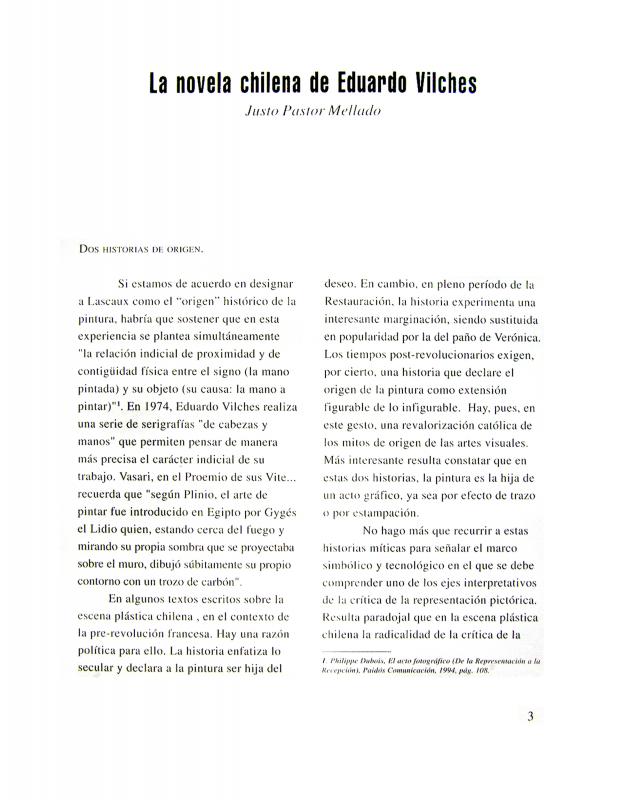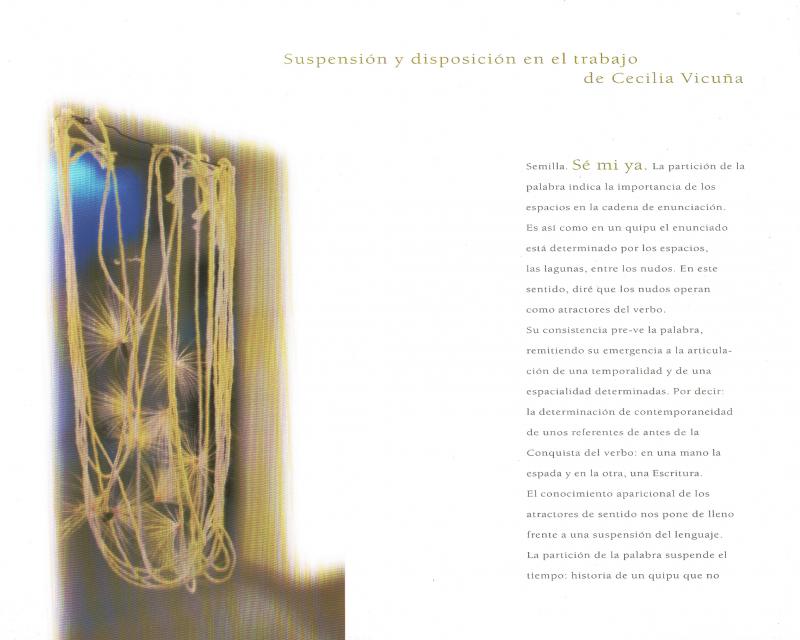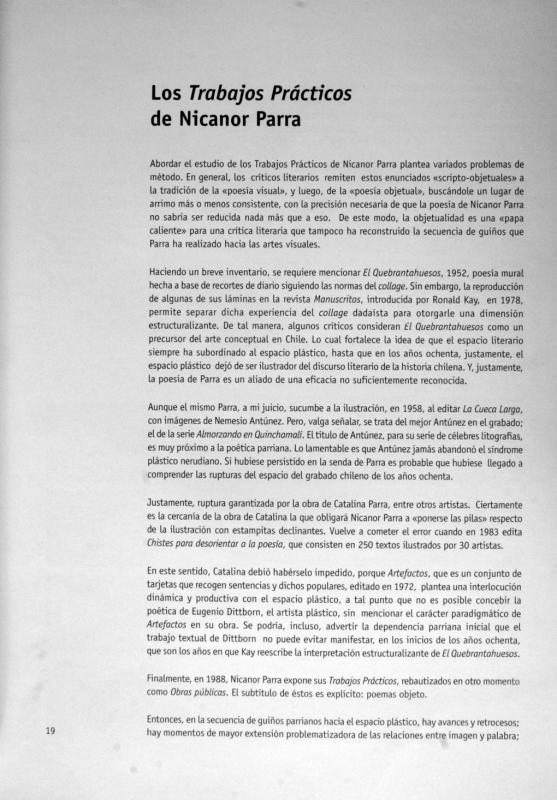This essay by the critic Justo Pastor Mellado (b. 1949) appeared in Eduardo Vilches, the catalogue for the exhibition of works by Eduardo Vilches [Prieto] (b. 1932) presented in June and July 1996 at the Museo Nacional de Bellas Artes in Santiago, Chile. The catalogue describes the artist’s career, his iconography, and the impact of his prints on artists such as Mario Soro, Arturo Duclos, and Alicia Villareal, among others.
In his essay, Pastor Mellado speculates—as Daniel Swinburn did in “Eduardo Vilches. La memoria transparente de un artista”—about the artist’s forays beyond the traditional boundaries of classical printmaking, going beyond the usual techniques and craft to explore other processes. In his search for precedents of Vilches’s work, Pastor Mellado reviews prints and drawings from 1957 to 1959 that depict the Chilean coastline in the Concepción region. In 1964, the artist created a series of woodcut prints that featured black and white silhouettes. Pastor Mellado discusses Vilches’s parallel work in photography: the shadows that appear as marks or patches in his prints appeared as shadows in his photographs. The author also mentions the artist’s schooling and training, the time he spent at Taller 99, his time at the Escuela de Arte de la Universidad de Chile, his extension classes during the Reforma Universitaria (1968), and, finally, his impact as a teacher on the younger generations of artists he taught at the Escuela de Arte mentioned above.
[For further reading about Eduardo Vilches, see the following in the ICAA digital archive: “La novela chilena de Eduardo Vilches” (doc. no. 740382) also by Pastor Mellado; and “Eduardo Vilches. La memoria transparente de un artista” (doc. no. 767117) by Daniel Swinburn].
[For more on Pastor Mellado’s work, see the following: “Sobre Couve: la instantánea imposible” (doc. no. 748429); “Suspensión y disposición en el trabajo de Cecilia Vicuña” (doc. no. 754571); and “Los trabajos prácticos de Nicanor Parra” (doc. no. 753780)].



